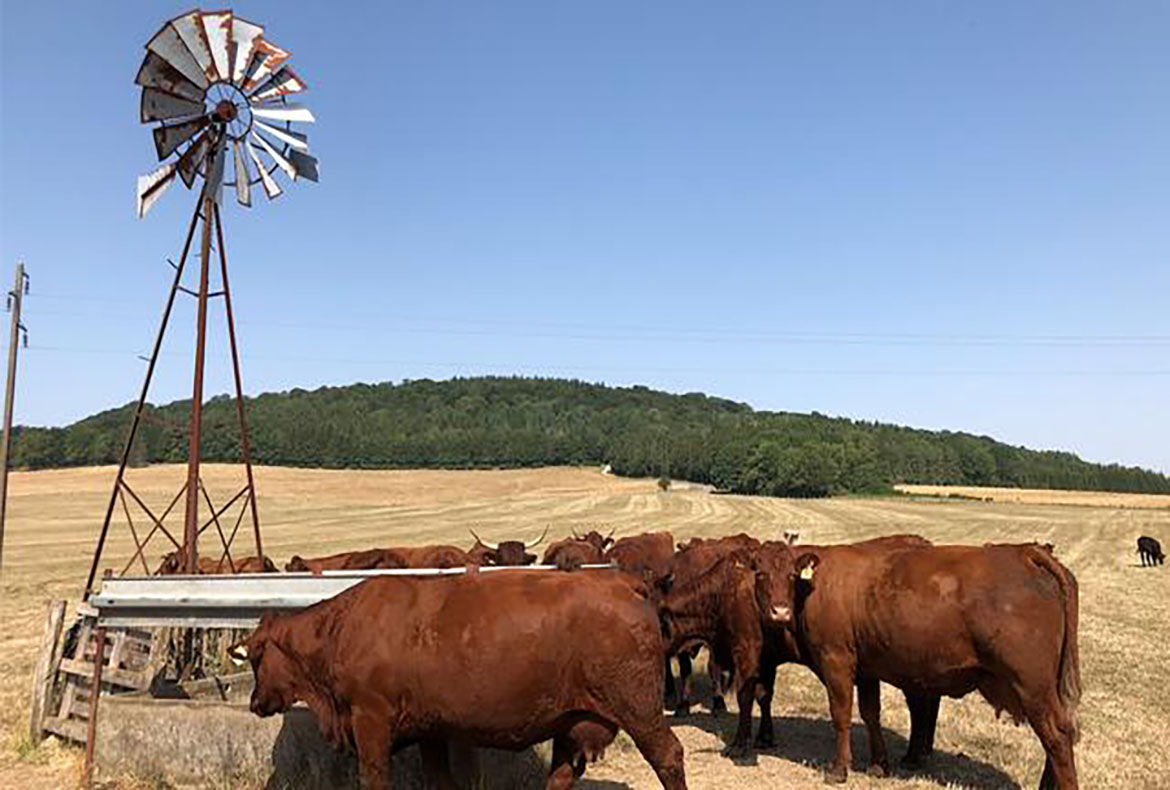Trees planted intelligently in agricultural areas serve as “passive air conditioners” for crops and livestock.
Agroforestry is an agronomic approach that has been proven in agriculture to cope with heat waves caused by climate change.
It is also a solution for animal welfare to act as an “air conditioner” for farm animals in pastures during the day.
- The surface of the planet disturbed by extreme temperatures reached 40% of the planet during the medieval period (years 800 to 1200).
- Today 98% of the earth’s surface is affected by global warming.
Are we ready to handle such a situation?
How to deal, in breeding, with heat waves, heat waves which attack all nature, dry up groundwater and waterways and endanger the life, health and optimal profitability of breeding?
Trees, properly chosen (depending on the type of soil, regional climate and local climatic history) allow good water management and are essential for animal welfare and productivity.
Climate change degrades animal welfare and livestock productivity.
Heat stress changes the animal’s basic metabolism, that is, the animal’s energy expenditure to survive. Cattle are among the species that suffer the most from heat peaks.
There is an urgent need to put in place measures to preserve animal feed resources and minimize the negative effects of changes in basal metabolism, that is, the expenditure of energy necessary for all vital organic functions of livestock.
Following summer heat, animals can become temporarily infertile and need more than 6 months to become fertile again, according to the Australian study by John Gaughan. Umberto Bernabucci, from the University of Tuscia in Italy, has shown that cows’ livers are severely affected by exposure to peak heat: they are more prone to infectious and metabolic diseases when exposed to high heat.
The quality of cow’s milk drops during summer heat waves. The concentration of casein, the main protein in milk, drops by 22% compared to the winter content.
Various corrections are to be considered:
- Cooling of the atmosphere in livestock buildings.
- Misting of animals.
- Creation of shading to keep the ambient temperature around the animal below its body temperature (presence of trees in the meadows: thermal regulating agroforestry).
- Germination (ecological hydroponic herbage) (1).
- Provision of animals with clean drinking water, RENEWED EVERY DAY.
(1) Germination: the best key to having healthy animals.
Germination is a food approach capable of solving specific and / or difficult food and health situations for animals such as:
- Extreme heatwave, prolonged drought, or, on the contrary
- Intense cold
Both of which prevent animals from being offered the normal diet that meets their needs.
Germination offers at all times, in all thermal situations, a fresh, green, growing food, that is to say, authentically alive, vitamins, to fully meet the physiological, nutritional and immune needs of animals and effectively prevent disorders that frequently arise when animals are deficient due to uncontrolled climatic and nutritional conditions.
Germination – the seedlings of ecological grass – provides a vitamin supply capable of even responding to certain physiological and metabolic pathologies and to certain disorders resulting from insufficient immune functions.
Germination also called “sprouted seeds”, “young shoots”, … corresponds to a food concentrate comparable to “super foods” and to the best “food supplements of the Modern Diet” for humans.
The practice of germination is very old, but modern technology provides safe superfoods that every breeder should offer their animals to optimize the health, productivity and profitability of their farms.



Give a Reply
You must be logged in to post a comment.